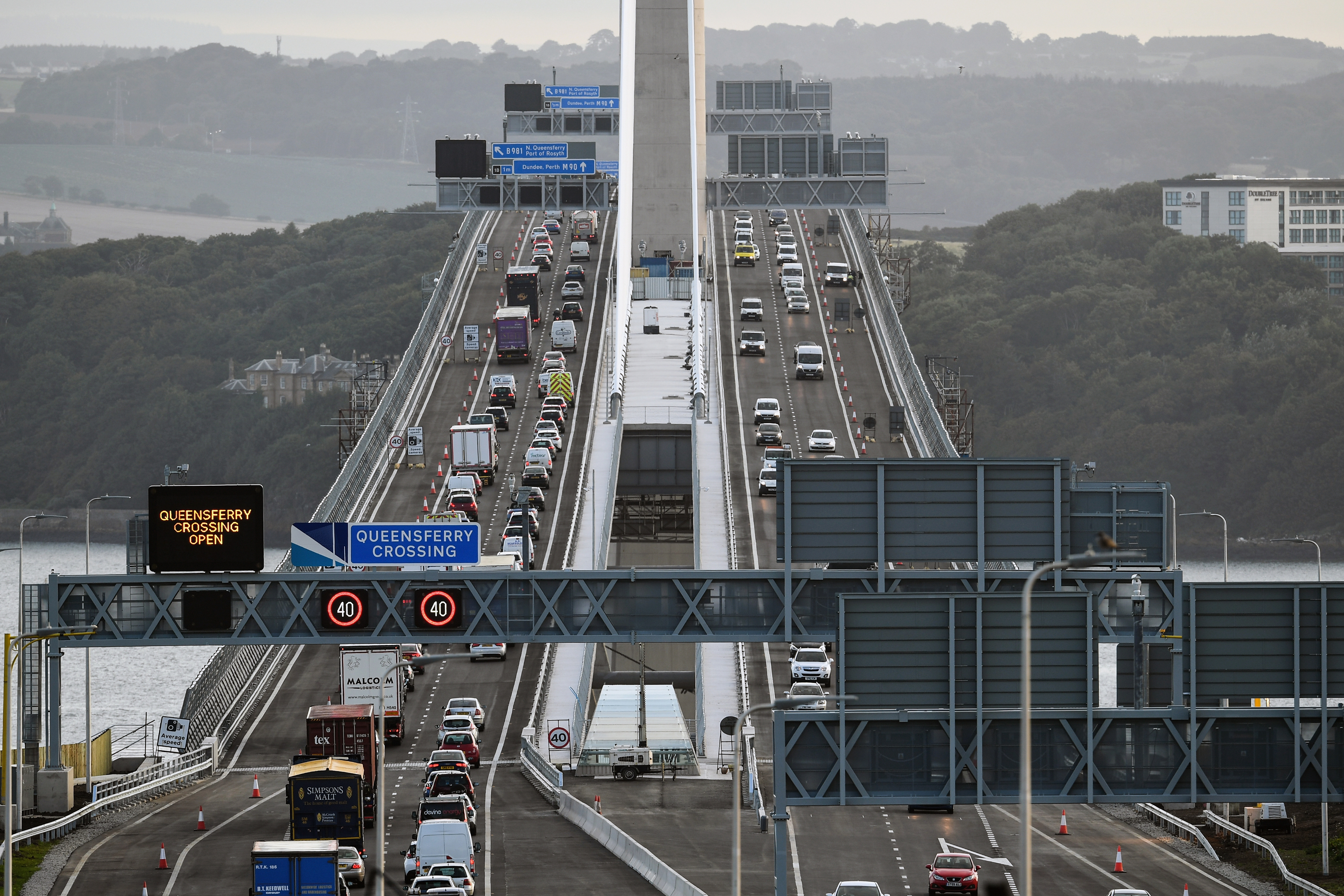THE Queensferry Crossing project was managed effectively and delivered value for money, but transport bosses must be clearer about how they will measure its wider benefits, a report from Scotland’s public spending watchdog has found.
The flagship £1.34 billion bridge across the Firth of Forth was opened a year ago, coming in under budget but completed eight months later than first estimated.
Audit Scotland’s report praised Transport Scotland’s budgeting, governance, quality assurance, risk management and competitive tendering for the crossing.
It found the Scottish Government agency had managed the project well, with “a clear project scope and the budget included all relevant costs”.
The report stated: “The team provided regular, consistent and up-to-date information to the project board about costs, risks, quality and timescales.
“This provided a strong foundation for the project to succeed.”
However, the auditor also noted it was too early for some of the new bridge’s wider benefits – such as improving public transport across the Forth, cutting journey times and boosting the economy – to be demonstrated.
Transport Scotland has a plan for evaluating progress, including the impact on journey times and traffic flow.
However, the report said “more detail is required on other outcome measures and when these will be delivered”.
“For example, how it will assess the impact of improved network connections and junctions, and the project’s contribution to economic growth,” it added.
Further detail is also needed on public transport benefits, the report said.
“Transport Scotland now needs to clearly set out its plans on how it will support public transport providers to meet increasing demand for travel across the Forth. This should include actions and timescales.”
Auditor General Caroline Gardner said: “There is much the public sector can learn from the way Transport Scotland managed the project and it’s important that the good practice is shared more widely.
“The management of the project delivered value for money and achieved its overall aim of maintaining a reliable road link between Fife and the Lothians.
“Transport Scotland now needs to produce a clearer plan about how it will measure the success of the project’s wider benefits, including its contribution to economic growth and improved public transport links.”
Transport Secretary Michael Matheson welcomed the report’s findings.
He said: “While it is too early to complete a wide-ranging assessment evaluating the project’s outcomes, we accept the recommendations in the report and aim to carry out a full post-project evaluation in late 2018 detailing performance relating to journey times and traffic flows.
“This will include an assessment of the impact of improved network connections and junctions, and the project’s contribution to economic growth and exploring what further support can be offered to public transport providers to meet any future increase in demand for travel across the Forth.”
He added: “As recommended in the report, the successful delivery of the Forth Replacement Crossing project has provided a number of valuable lessons learned that we utilise in our future work and we will seek opportunities to share these lessons more broadly within the Scottish Government and the broader public sector.”

Enjoy the convenience of having The Sunday Post delivered as a digital ePaper straight to your smartphone, tablet or computer.
Subscribe for only £5.49 a month and enjoy all the benefits of the printed paper as a digital replica.
Subscribe